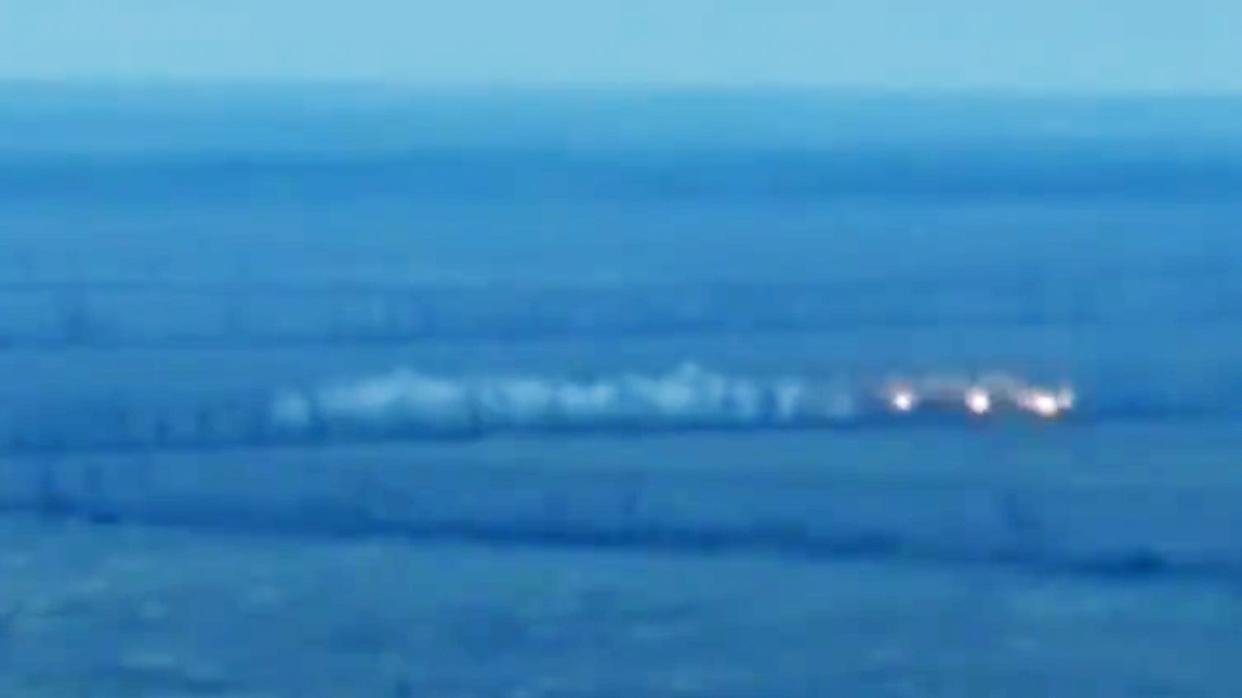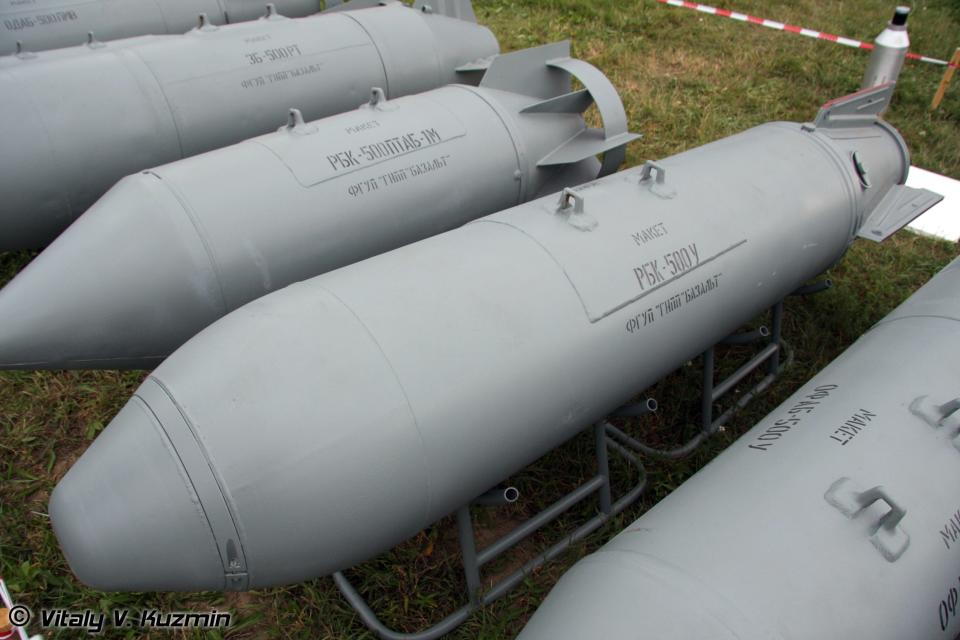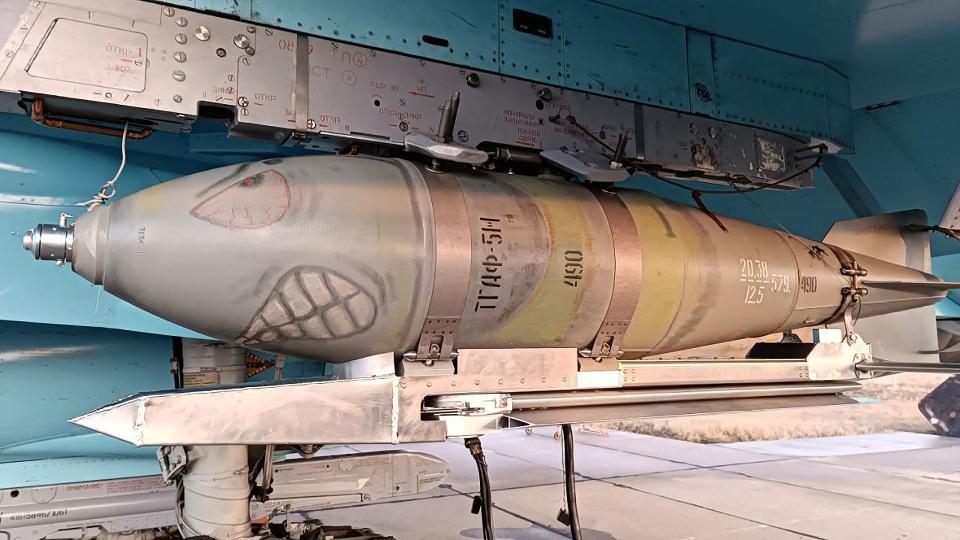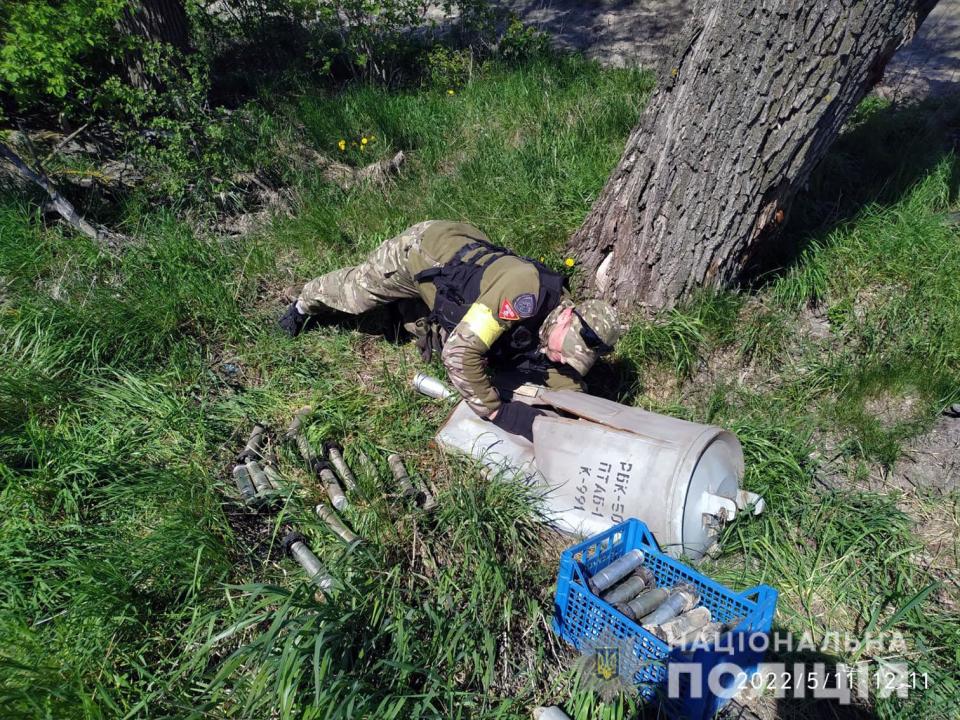Russian Glide Bomb Kits Now Adapted For Cluster Munitions: Reports

Video has emerged showing the apparent use of guided standoff cluster bombs by Russian forces in Ukraine. While both Kyiv and Moscow have previously used different kinds of cluster munitions in the conflict, Russian media and military bloggers state that this is the first large-scale use of these weapons with guidance packages and wing kits, since the start of the war.
https://twitter.com/clashreport/status/1726177933386203140
The video in question was apparently first published yesterday by the Voin-DV channel, on the Telegram messaging app. The footage was reportedly taken near Staromaiorske, a village in the Donetsk region, in southeastern Ukraine. Providing several angles, taken from drones, the video shows multiple flashes above a field, including in a long ‘string,’ apparently abreast a treeline, after which plumes of smoke rise from the detonating munitions. While we cannot confirm it, the appearance is certainly consistent with air-launched cluster bombs, including the Russian RBK-500.
The most popular RBK-500U version of this weapon was introduced by the Soviet Union in the late 1980s as a single-use cluster bomb and it can be loaded with various types of submunitions. The bomb has a length of 8 feet 2 inches and a diameter of just under 18 inches.

The same channel provides the following caption:
“Exclusive: The footage shows the first mass use of the RBK-500 in this armed conflict in the Staromaiorske area. We will not publish more detailed data yet, but if I were the Khokhli [a derogative term for Ukrainians], I would start getting used to living underground.”
According to the Russian news website Gazeta.ru, the RBK-500 cluster bombs were indeed employed against Ukrainian Armed Forces positions, although the same source says that the Russian Ministry of Defense has not confirmed the use of this kind of weapon.
More details were provided by the usually well-informed Russian-military-affiliated Fighterbomber channel, also on Telegram, including references to the novel long-range precision guidance modification.
Fighterbomber claims that, following earlier tests, Russia has now begun “the practical application” of RBK-500 cluster bombs fitted with guided wing kits. Officially designated UMPK, or Unifitsirovannyi Modul Planirovaniya i Korrektsii, meaning unified gliding and correction module, standoff guidance kits for existing bombs began to appear in the conflict around the start of this year. You can read about them in detail here.

“Of course, this is not the first use of cluster bombs in the [war in Ukraine], but it is definitely the first video showing the use of the UMPK with RBKs,” Fighterbomber adds.
The account continues: “It is especially pleasing that the designers who developed the UMPK make improvements and enhancements to their product almost daily, which allows the bombs to fly farther, making them more accurate and reliable.”
“In parallel, the aircraft software is being finalized, which will allow the launch of the bombs from all kinds of maneuvers.”
Fighterbomber claims that the UMPK versions of the RBK-500s seen in the video were loaded with ShOAB-0.5M submunitions. The 0.5 in this designation indicates the nominal weight of the submunition, in this case 0.5 kilograms, or 1.1 pounds. A single RBK-500 normally carries 565 of these submunitions.
ShOAB, or Sharikovaya Oskolochnaya Aviatsionnaya Bomba, means pellet fragmentation aerial bomb. Examples of the ShOAB-0.5 series can be seen in the tweets embedded below.
https://www.twitter.com/blueboy1969/status/1648930923801354242?s=20 https://twitter.com/EliotHiggins/status/833068825578962946
The spherical ShOAB-0.5M is a high-explosive anti-personnel weapon and is armed by centrifugal force. Once it leaves its container, the airflow acts on flutes around the submunition, imparting a spin, which arms the fuze. As it impacts the ground, the spinning stops, triggering the detonation.
On detonation, each ShOAB-0.5M disperses approximately 304 steel balls.
Fighterbomber further notes that the submunitions fall from the RBK-500 in a characteristic pattern, and detonate in a distinctive ‘bagel’ shape, the size of which can be adjusted depending on the altitude of the release as well as the timing on the fuze. This source notes that at least two of these bombs are normally dropped in quick succession, to ensure better coverage.
Interestingly, Fighterbomber notes that, currently, each combat aircraft is only able to carry two examples of the UMPK series, which is a “waste of the resource of the airplanes, engines, and […] flight and engineering staff.” The account suggests that effort should be made to increase the payload to four of these bombs per aircraft.
https://twitter.com/WarMonitors/status/1681963703464337414
Essentially, the RBK-500 and ShOAB-0.5M combination creates a lethal cloud of shrapnel and explosives that blanket the ground. The weapon is considered highly effective against personnel and soft targets. For Russia, which is an enthusiastic operator of cluster munitions (despite official protestations to the contrary), it would be a logical choice for fighting in the east of Ukraine, especially, with its extensive networks of trenches.
While Fighterbomber suggests that the development of the standoff, guided cluster bomb is a recent undertaking, there have also been previous Russian efforts in this direction. The PBK-500U had enlarged flight surfaces enabling it to glide a reported distance of 31 miles when dropped from an altitude of 32,00 feet. The bomb was controlled by inertial navigation with correction by a satellite positioning receiver.

https://www.twitter.com/Russian_Defence/status/903368615013089281?s=20
It’s not clear if the weapon apparently used near Staromaiorske is directly related to the PBK-500U, or if it’s a more ad-hoc adaptation that adds a wing kit and guidance package to a standard bomb body, as we have seen with previous Russian glide bombs in this conflict.
Either way, this solution ensures that the launch aircraft can drop these weapons outside the most dangerous engagement zones of many of Ukraine’s air defenses, giving them a degree of survivability that is otherwise only possible by using much more expensive precision standoff weaponry. With more advanced Western air defense equipment now in Ukrainian hands, such concerns only become more urgent on the part of the Russians.
Since the appearance of the first Russian glide bombs, there have been repeated statements from Ukrainian officials confirming how difficult it is to intercept these weapons, which have been described as “almost impossible to shoot down.”
Thanks to the guidance kit on the UMPK, which uses satellite navigation, the weapon should still reach its target with a degree of accuracy.
Ukraine, while not known to possess anything similar to the RBK-500/UMPK, has also made use of cluster munitions, including those supplied by Western nations.
https://twitter.com/Flash_news_ua/status/1681991257277575168
At one point in the war, the provision of these kinds of weapons to Ukraine seemed unlikely. However, the first of many thousands of cluster artillery shells from U.S. stocks began to arrive in Ukraine in July after a prolonged period of internal debate within the Biden administration. The shells were seen as a way to significantly boost 155mm artillery ammunition stocks to support the Ukrainian counteroffensive as well as to bring new effects to the battlefield in an attempt to break fortified Russian lines.
Ukrainian use of cluster munitions has, reportedly, been extremely effective.
“They are super efficient,” one Ukrainian marine told The New York Times in September. “When our guys see how we use them against the enemy, their spirits soar.”
Ukrainian spirits have no doubt been raised higher still by the arrival of the U.S.-supplied Army Tactical Missile System short-range ballistic missile, or ATACMS, which Ukraine apparently first used in combat last month. Fitted with cluster-munition warheads, these missiles brought significant destruction to two airfields in Russian-occupied Crimea, as you can read about here.
https://twitter.com/Osinttechnical/status/1714258740684157116
With ATACMS now able to deliver cluster munitions (and possibly other warheads) at truly standoff ranges for Ukraine, the latest Russian development may be intended as a response to this powerful new capability.
Even President Vladimir Putin has voiced some alarm at the appearance of ATACMS on the battlefield, stating as much last month:
“War is war,” Putin said. “And, of course, I have said that [ATACMS] pose a threat. It goes without saying.”
For its part, Moscow has said that it does not use cluster munitions in Ukraine, despite plenty of evidence to the contrary.

In August, during the 11th Moscow Conference on International Security, Russian Minister of Defense Sergey Shoigu said that the Russian Armed Forces do not use cluster munitions, but that, at any moment “the decision can be reconsidered.” At the same time, Shoigu criticized Ukraine for using its own cluster weapons while not facing condemnation from humanitarian organizations.
At the NATO Summit in Vilnius, Lithuania, in July, Ukrainian President Volodymyr Zelensky said: “I want to look at this from a perspective of fairness.” He added: “Russia’s constantly using cluster munitions on our territory, and they’re fighting only on our land. They’re killing our people.”
In 2010, the Convention on Cluster Munitions entered into force, prohibiting the use, transfer, and stockpiling of cluster munitions that disperse explosive submunitions weighing less than 20 kilograms (44 pounds). This would include the RBK-500 when loaded with ShOAB-0.5M submunitions, but since neither Russia nor Ukraine ever ratified the convention, the point is superfluous.
With that in mind, we are likely to see the use of cluster munitions of different kinds by both sides in the conflict. Adapting the RBK-500 as a standoff glide bomb, meanwhile, is a very logical development based on Russian tactics and technologies employed in the war so far.
Contact the author: thomas@thedrive.com

